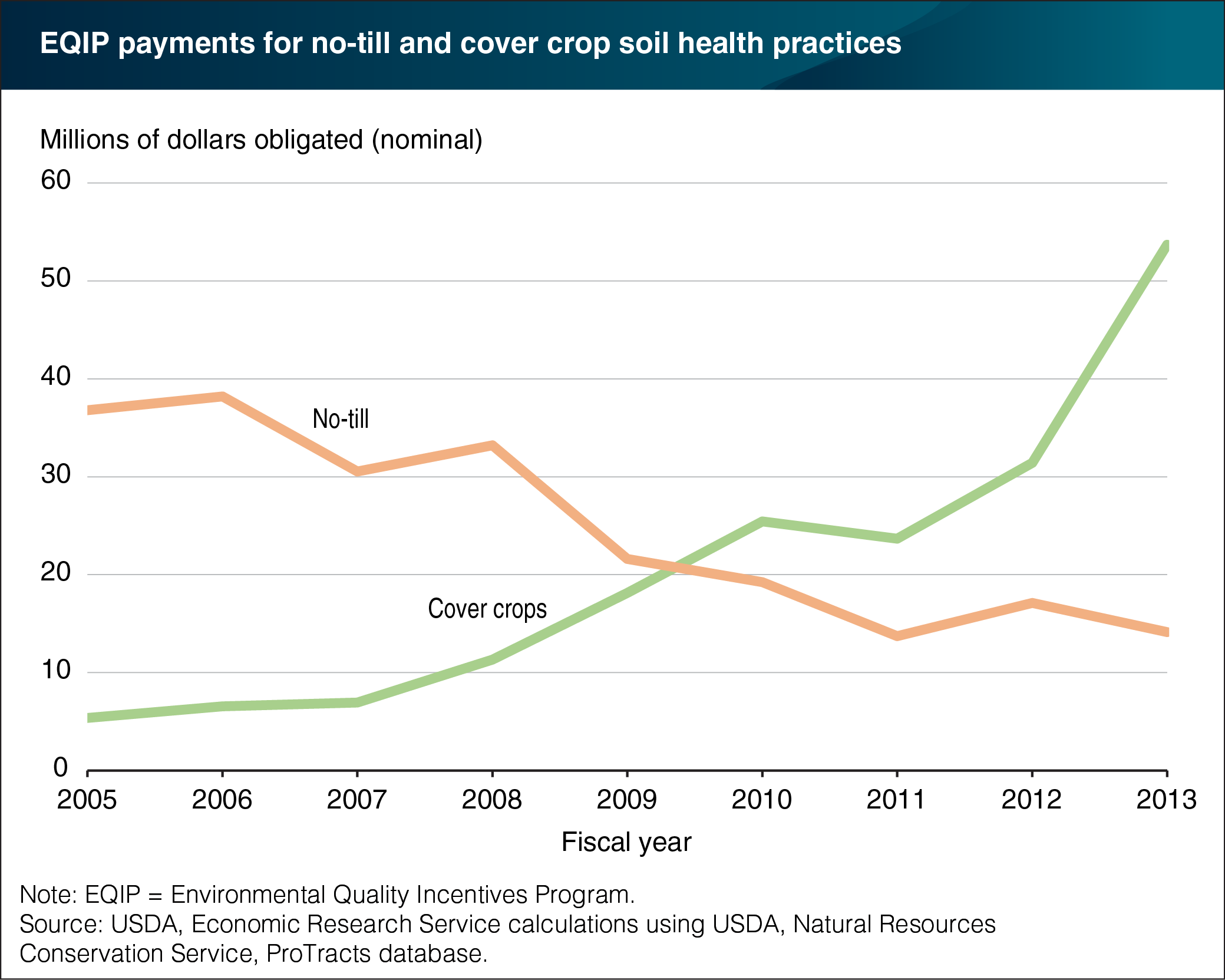To promote soil health, USDA’s funding for cover crops increased ten-fold between 2005 and 2013
- by Steven Wallander and Maria Bowman
- 10/25/2016

Farmers can receive Federal financial assistance for implementing a wide range of conservation practices from the Natural Resources Conservation Service’s Environmental Quality Incentives Program (EQIP). Adopting no-till and planting cover crops are two common agricultural practices that can improve soil health. Farmers receiving payments for no-till agree to plant crops without using any sort of plow to turn residue from the prior crop into the soil. Those receiving payments for cover crops plant certain crops (such as clover, field peas, and annual ryegrass) or a mixture of crops to maintain cover and add organic matter. Cover crops are usually grown over the winter, between plantings of commodity crops. From 2005 to 2013, USDA funding for cover crops in EQIP increased ten-fold—from about $5 million to more than $50 million in nominal terms. Over this same period, funding for no-till adoption declined. This shift in focus can be attributed to a variety of factors, such as increasing adoption of no-till by farmers even without payment and improving availability of cover crop seeds and educational materials. This chart appears in the September 2016 Amber Waves feature, “An Economic Perspective on Soil Health.”


